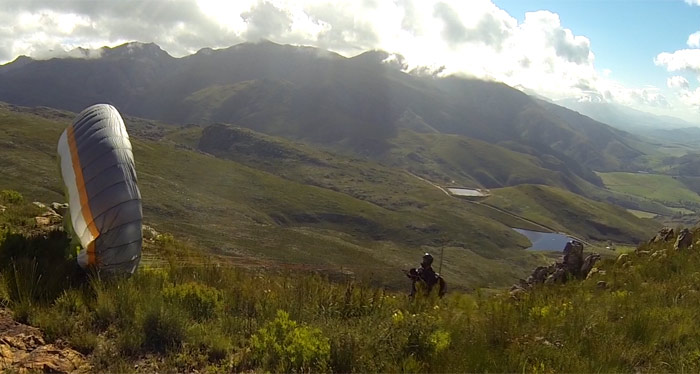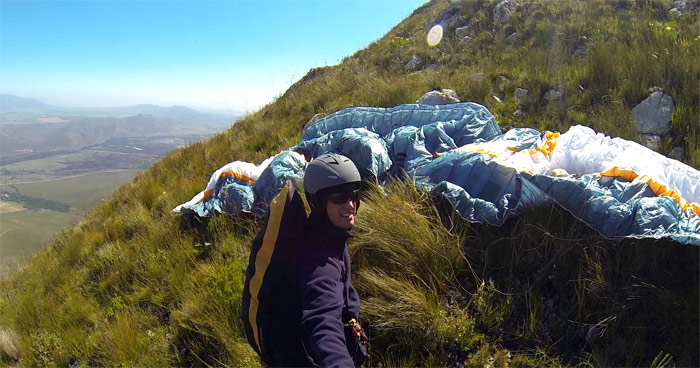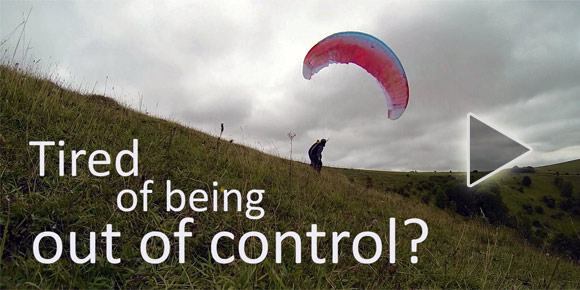
When the wind runs across the launch slope it can become difficult to control the wing during the launch. This is usually because the wind becomes more gusty due to the turbulence created by the terrain. The wind direction will also become inconstant.
Here’s a video demonstrating a simple technique for dealing with this tricky situation.
As mentioned in the video, a poor launch in crosswind conditions comes from the position of the wing. If you lay out facing downslope (a normal habit from good flying conditions) then it will pull you downhill when you launch.
Turn your wing to face into wind, not down the slope. This will prevent a skew launch and the reduce the danger of being pulled down the slope and out of control.
Then take one big step uphill while keeping your lines taut. This forces the wing to go skew, uphill.
This really comes into its own when you’re launching from a rocky slope or one with a steep drop-off. Sending the wing upslope first gives you time to choose your launch moment, and will boost your confidence, which in turn improves your launch control.
Up to 45 degrees of crosswind is usually safe, but more than this is risky. Why?
1. The risk of turbulence increases sharply: any spine will now generate rotors
2. An angled wind has much more distance on the slope to collect turbulence than if it was running straight upslope.
3. The lift will diminish, as the wind is encouraged to slide sideways along the ridge rather than blow up it. To soar in a crosswind thus requires stronger wind and therefore more turbulence.

This photo shows extreme crosswind conditions. Turbulence from the spine on the right is to be expected. It’s rocky and windy, so the pilot must get it right. Here he has moved slightly upslope of the centreline (towards the camera), so the wing is encouraged to go upslope as it rises.
Sometimes it can still be safe to launch an extreme crosswind. For instance, if you’re on a spur and you’re planning on flying away from it to a soarable ridge. Or the launch site is the only clear area but it’s high above the surrounding terrain. Or the wind is light but thermic, and you just need to get off the ground.

This photo is taken looking downwind, so about 80 degree crosswind. The pilot has set the wing up so it will inflate the right wingtip first (left side when facing the wing). This is a variation on the technique, because there are rocks upslope so he can’t lay out the wing across the wind.

